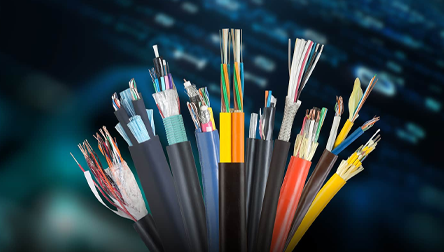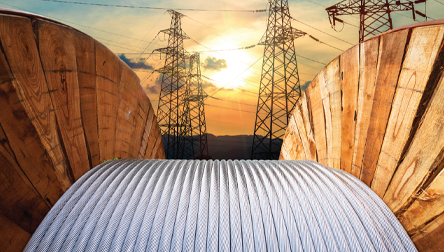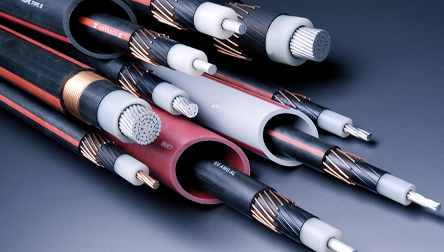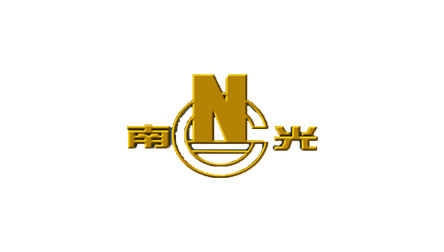The difference and application of twisted pair, coaxial cable and optical fiber
Release time: 2021-12-31 17:55
1. Coaxial cable
Coaxial cable has the advantages of low price and convenient laying (compared with optical fiber), so in general, in a small range of monitoring systems, because of the transmission distance is very close, the use of coaxial cable to directly transmit monitoring images has little damage to the image quality, can meet the actual requirements.
However, according to the analysis of the characteristics of the coaxial cable itself, the attenuation of the signal when it is transmitted in the coaxial cable depends on the transmission distance and the frequency of the signal itself. Generally speaking, the higher the signal frequency, the greater the attenuation. The bandwidth of the video signal is very large, up to 6MHz, and the color part of the image is modulated at the high end of the frequency, so that the video signal is transmitted in the coaxial cable not only the overall amplitude of the signal is attenuated, and the attenuation of each frequency component is very big, especially the color part attenuation is the largest. Therefore, coaxial cable is only suitable for close-range transmission of image signals, when the transmission distance reaches 200 meters or so, the image quality will be significantly reduced, especially the color becomes dim, there is a sense of distortion.
In engineering practice, coaxial amplifiers are used to extend the transmission distance. The coaxial amplifier amplifies the video signal to a certain extent, and compensates the different frequency components by adjusting the balance, so as to minimize the distortion of the video signal output by the receiving end. However, coaxial amplifiers cannot be cascaded indefinitely. Generally, only two or three coaxial amplifiers can be cascaded in a point-to-point system. Otherwise, video transmission quality cannot be guaranteed, and adjustment is difficult. Therefore, when coaxial cable is used in monitoring system, in order to ensure better image quality, the transmission distance is generally limited to about four or five hundred meters.
In addition, coaxial cable has some disadvantages in the transmission of image signals in the monitoring system:
1) The coaxial cable itself is greatly affected by climate change, and the image quality is affected to some extent;
2) Coaxial cable is thick, which is not convenient for wiring in intensive monitoring applications;
3) Generally, coaxial cables can only transmit video signals. If the system needs to transmit control data, audio and other signals at the same time, additional wiring is required;
4) Coaxial cable has limited anti-interference ability and cannot be used in strong interference environment;
5) Coaxial amplifiers also have the disadvantage of being difficult to adjust.
2. Twisted pair
The use of twisted pair has a long history, telephone transmission is the use of twisted pair, in many industrial control systems and interference larger places and long-distance transmission are used in twisted pair, we are widely used today LAN is also the use of twisted pair. The reason why twisted pair is so widely used is that it has many advantages such as strong anti-interference ability, long transmission distance, easy wiring and low price. Because the twisted-pair signal also has a large attenuation, so the transmission distance, the signal frequency should not be too high, and high-speed signal such as Ethernet can only be limited to 100m. For video signal, bandwidth up to 6MHz, if directly transmitted in the twisted pair, will also attenuated greatly, so the video signal on the twisted pair to achieve long-distance transmission, must be amplified and compensated, twisted pair video transmission equipment is to complete this function. With a pair of twisted pair video transceiver equipment, the image can be transmitted to 1 to 2km. Twisted-pair and twisted-pair video transmission equipment are very cheap, not to increase the cost of the system, but the cost of the increase in distance compared to coaxial cable is much lower. Therefore, the monitoring system with twisted pair transmission has obvious advantages:
1) Long transmission distance and high transmission quality. Because of the advanced processing technology adopted in the twisted pair transceiver, it compensates the attenuation of the twisted pair to the amplitude of the video signal and the attenuation difference between different frequencies, and maintains the brightness and color of the original image and real-time performance. When the transmission distance reaches 1km or more, the image signal is basically distortion free.
If the trunk is used, the transmission distance is longer.
2) Easy wiring and high cable utilization rate. A pair of ordinary telephone lines can be used to transmit video signals. In addition, any pair of the five types of unshielded twisted pair that are widely laid in the building can transmit a video signal all the way without additional wiring. Even rewiring is easier than coaxial cable. In addition, there are 4 pairs of twisted pairs in one type 5 cable. If one pair of wires is used to transmit video signals, the other several pairs of wires can also be used to transmit audio signals, control signals, power supply or other signals, which improves the utilization rate of cables, avoids the trouble caused by the separate wiring of various signals and reduces the project cost.
3) Strong anti-interference ability. Twisted pair can effectively suppress common-mode interference, even in strong interference environment, twisted pair can also transmit excellent image signal. Moreover, several pairs of twisted pairs within a cable are used to transmit different signals without interfering with each other.
4) High reliability and easy to use. Using twisted pair wire to transmit video signal, special transmitter should be connected in the front end and special receiver should be connected in the control center. This kind of twisted pair transmission equipment is cheap, easy to use, no professional knowledge, no too much operation, one installation, long-term stable work.
5) Cheap and convenient. Due to the use of the common type 5 unshielded cable or ordinary telephone line widely used at present, it is easy to buy, and the price is also very cheap, which brings great convenience to engineering applications.
3. Optical Fiber
Optical fiber and optical terminal are mainly used in monitoring field to solve two problems: one is transmission distance, the other is environmental interference. Twisted pair and coaxial cable can only solve the problem of monitoring image transmission in a short distance and a small range. If the image signal needs to be transmitted several kilometers or even hundreds of kilometers away, it needs to use optical fiber transmission. In addition, for some places with strong interference, in order not to be affected by environmental interference, it is also necessary to use optical fiber transmission. Because optical fiber has many advantages, such as wide transmission band, large capacity, no electromagnetic interference, little influence from the external environment, a single optical fiber can transmit all the signals needed in the monitoring system, the transmission distance can reach hundreds of kilometers. The optical terminal can provide one way and multi way image interface, but also can provide two way audio interface, one way and multi way various types of two way data interface (including RS232, RS485, Ethernet, etc.), integrate them into one optical fiber transmission. The optical terminal provides flexible transmission and networking mode for the monitoring system, and the signal quality is good and the stability is high. In recent years, due to the rapid development of optical fiber communication technology, the price of optical fiber and optical devices decreases rapidly, which greatly reduces the cost of optical fiber monitoring system, so the application of optical fiber and optical terminal machine in monitoring system is more and more popular.
However, the use of optical fiber and optical terminal machine needs certain professional knowledge and special equipment, which brings certain difficulties to the construction and user use. In addition, the use of optical fiber transmission is not economical for short distance, small-scale monitoring systems.
Related News








